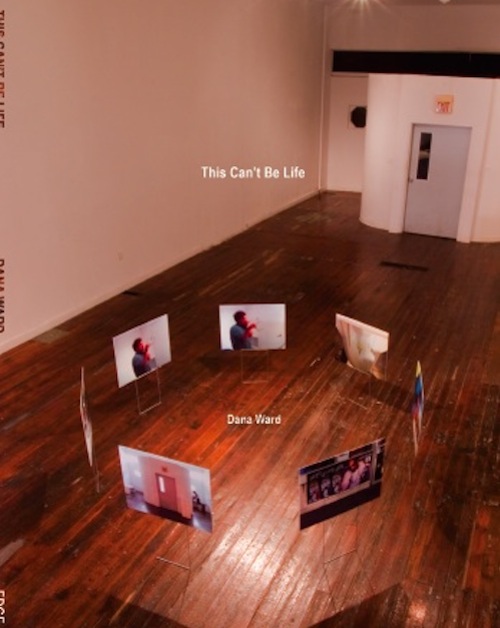David Gorin Finds the Family for Dana Ward's This Can't Be Life

David Gorin reviews Dana Ward's This Can't Be Life (Edge Books 2012)! At the Boston Review blog: "The poem that’s obsessed me most lately is the title track of Dana Ward’s first book, This Can’t Be Life (2012). My preoccupation has something to do with how the poem speaks back to two other poems I love: 'This Can’t Be Life' feels like a too-late-capitalist cousin of John Ashbery’s 'Into the Dusk-Charged Air' (1966), itself a post-modern take on the descriptive mode of James Thomson’s The Seasons (1728)." Nice links. More:
The dominant mode of Dana Ward’s “This Can’t Be Life” feels like a deadpan ekphrasis on a fashion magazine tableau spread, numbingly sexy and sexily boring, in which Thomson’s flowers reappear as printing on a dress and Ashbery’s rivers turn into the rich:
Lapo Elkman [sic] gazes out from the frame with a come-hither look. His wrists have soft bracelets around them & his shirt, black, is open. Looped on his neck pale strands of beads hang which causes a ribbon of shadow at his nipple. His facial hair, bleached by the sun, is brown-white. Tatiana Santa Domingo wears a floral printed dress. It is summer where she’s photographed or warm enough for clothes that light. Earrings perhaps of three golden hoops or two hang obscured in the shade of her hair. Her right cheek is touching the locks of Bianca Brandolini d’Adda whose own dress is dim purple satin. It has a black strap of lace an inch thick which, at her waist, intersects with another lace band even thicker & full of arabesques & Fleur De Lis. This lace is just above her belly which is pressed to the belly of Margherita Maccapani Missoni. White, with faint, almost invisible as flowers (maybe dots?) her sundress, exposes her shoulder.The poem goes on more or less like this for over four pages. You don’t have to google the names above to smell the money on them—but if you do, you’ll quickly find Vanity Fair’s “Fortune’s Children,” a series of 32 photographs of saddeningly gorgeous heirs and heiresses. “What’s it like being young and beautiful, with a 24-karat pedigree and inherited wealth, in populist, economically perilous 2009?” (I hear Keston Sutherland reply: “Coke into my ass through a funnel.”) Ward uses these images as source material, making plain from the mention of a “frame” in the first line that his description is of photographs rather than “life” itself.
Between portfolio and poem, there are several telling discrepancies. For instance, where most of the subjects in the portfolio occupy a photograph by themselves, Ward gives no indication that these images are drawn from different photographs, allowing us to imagine a single Thomsonian scene of abundance with Biana Brandolini d’Adda’s belly “pressed / to the belly of Margherita Maccapani Missoni,” just as one piece of her lace intersects with another. This pressing is anatomically unlikely, although the first time I read the poem I brushed over that unlikeliness without feeling it. Of course, the adjacency is much more likely if the people are made of paper, “pressed” and sold together in a magazine.
Read the full compare/contrast (Gorin also invokes Cormac McCarthy, praises) here.


